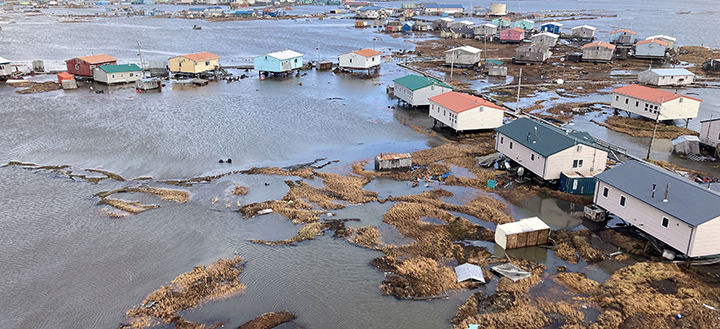A comprehensive emergency management plan (CEMP) is a vital tool for organizations aiming to safeguard lives, property, and operations in the event of a disaster. A well-crafted CEMP provides a structured approach to managing emergencies so that every phase of a disaster, from preparedness to recovery, is addressed.
When planning for a disaster, it’s important to think holistically, considering every aspect of the event, from cradle to grave. We discuss what a comprehensive emergency management plan entails and what to look for when selecting an emergency management firm to help develop and implement such a plan.
Core Components of a Comprehensive Emergency Management Plan
A comprehensive emergency management plan is built on five core components. Each of these components is crucial for helping an organization be fully prepared to handle any disaster:
Risk Assessment
Risk assessment is the first step in developing a CEMP. This involves identifying potential hazards that could impact the organization, assessing the likelihood of these events, and evaluating their potential impact. A thorough risk assessment helps organizations prioritize their emergency management efforts and allocate resources effectively.
Risk Assessment for Coastal Communities
Coastal communities are at higher risk for hurricanes and flooding. A risk assessment for such a community would focus on specific threats to these communities, such as evaluating the likelihood of a major hurricane making landfall and the potential impact of storm surges on infrastructure and populations.
Preparedness
Preparedness involves developing strategies and procedures to address the risks identified in the assessment phase. This includes creating emergency plans, conducting training and drills, and establishing communication protocols. Proper preparedness planning would let everyone in the organization know what to do when a disaster strikes.
Preparedness Exercises in Florida

In Florida, where hurricanes are a frequent threat, many organizations conduct annual preparedness exercises. These drills simulate hurricane conditions, allowing staff to practice their roles in a controlled environment. These exercises help identify gaps in the plan to make sure all personnel are prepared for a real emergency.
Response
The response phase of a CEMP is activated when a disaster occurs. This phase focuses on immediate actions to protect lives, stabilize the situation, and minimize damage. Response efforts include evacuations, emergency medical care, and the activation of communication networks to keep stakeholders informed.
- Key Aspects of the Response Phase
- Incident Command System (ICS): A standardized approach to command, control, and coordination of emergency response.
- Resource Management: Mobilizing and deploying resources quickly and efficiently.
- Crisis Communication: Keeping the public and stakeholders informed with timely, accurate information.
Recovery
Recovery efforts begin once the immediate threat has passed. This phase involves restoring services, rebuilding infrastructure, and supporting affected communities as they return to normalcy. Recovery is a long-term process that requires careful planning and coordination to ensure that the organization can bounce back effectively.
Recovery After Hurricane Katrina

The recovery process following Hurricane Katrina was extensive, involving the rebuilding of entire communities, restoration of critical infrastructure, and provision of long-term support to displaced residents. This recovery effort highlighted the importance of having a robust CEMP that includes detailed recovery plans.
Mitigation
Mitigation involves taking steps to reduce the impact of future disasters. This can include structural improvements, such as reinforcing buildings to withstand earthquakes, as well as policy changes, like updating building codes to reflect current risks. Mitigation is a proactive approach that aims to reduce the vulnerability of an organization to future disasters.
Mitigation Efforts in California’s Wildfire Zones

In California, where wildfires are a significant threat, mitigation efforts include creating defensible spaces around properties, improving fire-resistant building materials, and implementing controlled burns to reduce fuel loads. These efforts are designed to minimize the damage caused by wildfires and protect communities at risk.
What to Look for in an Emergency Management Firm
When planning for a disaster, choosing the right emergency management firm is crucial. The firm you select will play a significant role in developing and implementing your comprehensive emergency management plan. Here are some key factors to consider:
Experience and Expertise
Look for a firm with a proven track record in emergency management. The firm should have experience working with organizations similar to yours and a deep understanding of the specific risks you face. Expertise in areas such as risk assessment, crisis communication, and disaster recovery are essential.
Customized Solutions
A one-size-fits-all approach does not work in emergency management. The firm should be able to develop a CEMP tailored to your organization’s unique needs and risks. This includes conducting a thorough risk assessment, engaging stakeholders, and developing plans that reflect your organization’s priorities and resources.
Comprehensive Services
Select a firm that offers a full range of services, from risk assessment and planning to training and recovery support. This cradle-to-grave approach will mean the firm can support you at every stage of the emergency management process, from initial planning through post-disaster recovery.
Strong Communication Skills
Effective communication is critical during an emergency. The firm should have strong communication skills, both in terms of crisis communication during an event and in working with your organization to develop and implement the plan. Look for a firm that emphasizes clear, transparent communication throughout the process.
References and Success Stories
Ask for references and success stories from the firm’s previous clients. This can provide valuable insights into the firm’s capabilities and the results they have achieved. Look for examples that are relevant to your organization’s needs, such as successful recovery efforts after a disaster.
Emergency Preparedness Essentials
Emergency management firms offer a wide range of services designed to support organizations at every stage of the disaster management process. These services include:
Risk Assessment and Planning
Firms conduct detailed risk assessments to identify potential hazards and vulnerabilities. They then work with organizations to develop customized emergency management plans that address these risks.
Training and Exercises
To make sure plans are effective, firms offer training programs and conduct exercises that simulate real-life disaster scenarios. These exercises help organizations practice their response strategies and identify areas for improvement.
Crisis Communication Support
Effective communication is crucial during a disaster. Emergency management firms provide crisis communication support, helping organizations develop communication plans and manage public information during an event.
Recovery and Mitigation Assistance
After a disaster, firms assist with recovery efforts, helping organizations restore operations and rebuild infrastructure. They also provide mitigation support, helping organizations reduce their vulnerability to future disasters.
Start Developing Your Comprehensive Emergency Management Plan

Developing a comprehensive emergency management plan is essential for any organization seeking to protect its people, property, and operations from the impacts of disasters. By taking a holistic approach and working with a reputable emergency management firm, organizations can make sure they are fully prepared to handle any emergency, from initial planning through post-disaster recovery.
When selecting an emergency management firm, look for experience, customized solutions, comprehensive services, strong communication skills, and a proven track record of success. Contact us to learn how Tidal Basin can assist with your emergency management needs.



